
Since its start, our University has nurtured great educators. Go behind the scenes as student teachers lead their first classrooms.
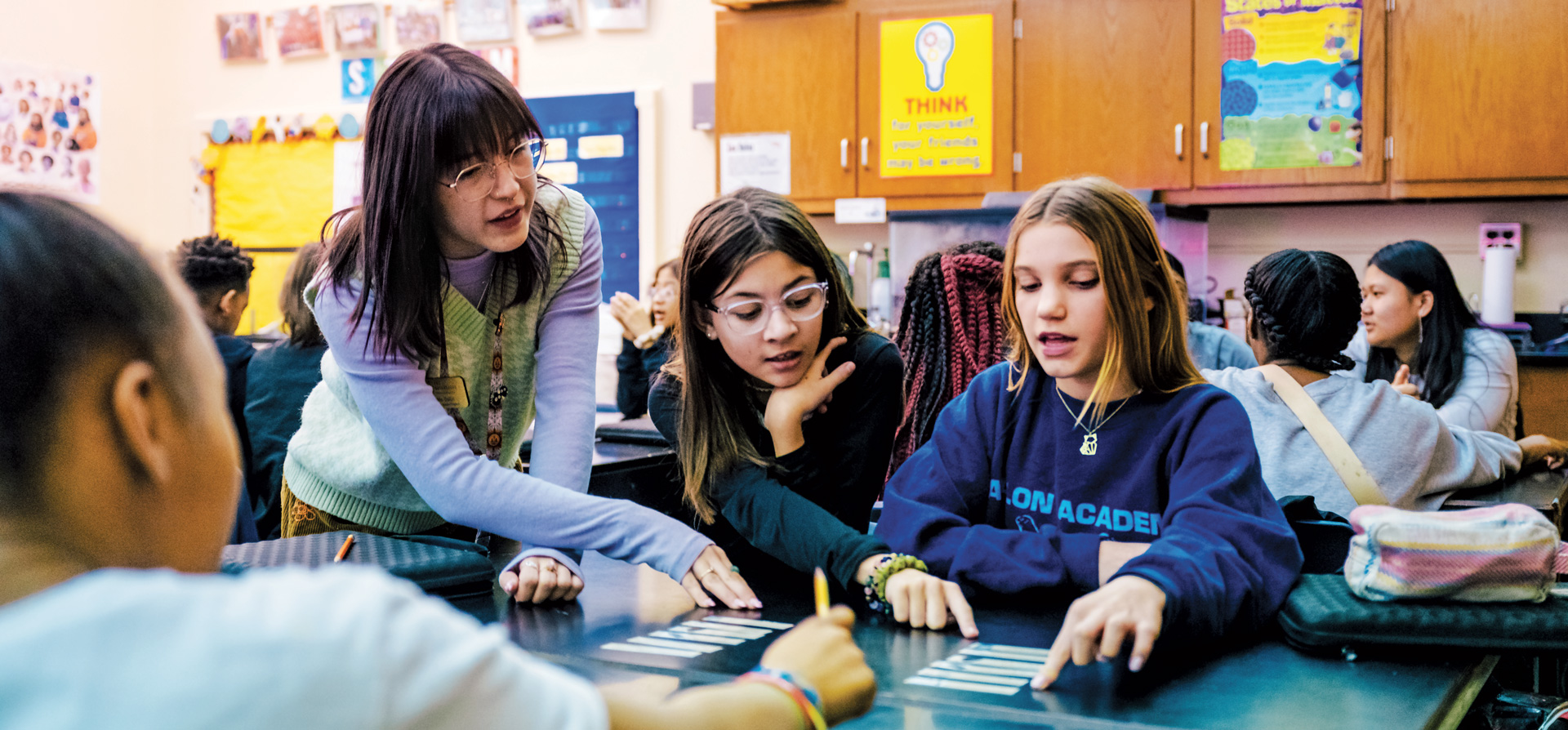
A Place to Learn
You probably remember a teacher who went above and beyond. Someone who encouraged you, showed you new possibilities, or created a fun place for you to learn.
Believe it or not, that teacher was once taking the reins of a classroom for the very first time. This spring, many UNCG student teachers are taking that first step themselves. Soon, they’ll be a life-changing teacher for the next generation.
Clinical Associate Professor Scott Howerton ’05 MEd, ’11 PhD says, “This is their final semester before they enter the teaching profession. Students take on the role as a full-time professional with support from their cooperating teacher.” UNCG’s student teachers call these “on-site teacher educators” OSTEs or “Osties.”
Today, you can find graduates of UNCG programs in over 75% of the state’s public-school districts. Spartans also teach in numerous independent schools, community colleges, and universities across North Carolina.
These UNCG student teachers tell us they have a passion for their content areas, endless curiosity about the craft of teaching, and a yearning to help young students discover their passions. They also want to be trusted role models.
“My teachers in elementary school really had an impact on me. I want to show students that they can do anything,” says Anniya Moore, one of those student teachers. She is in a second-grade class at Caleb’s Creek Elementary School in Kernersville.
But first, they need the skills to inspire and educate. Those come from School of Education faculty.
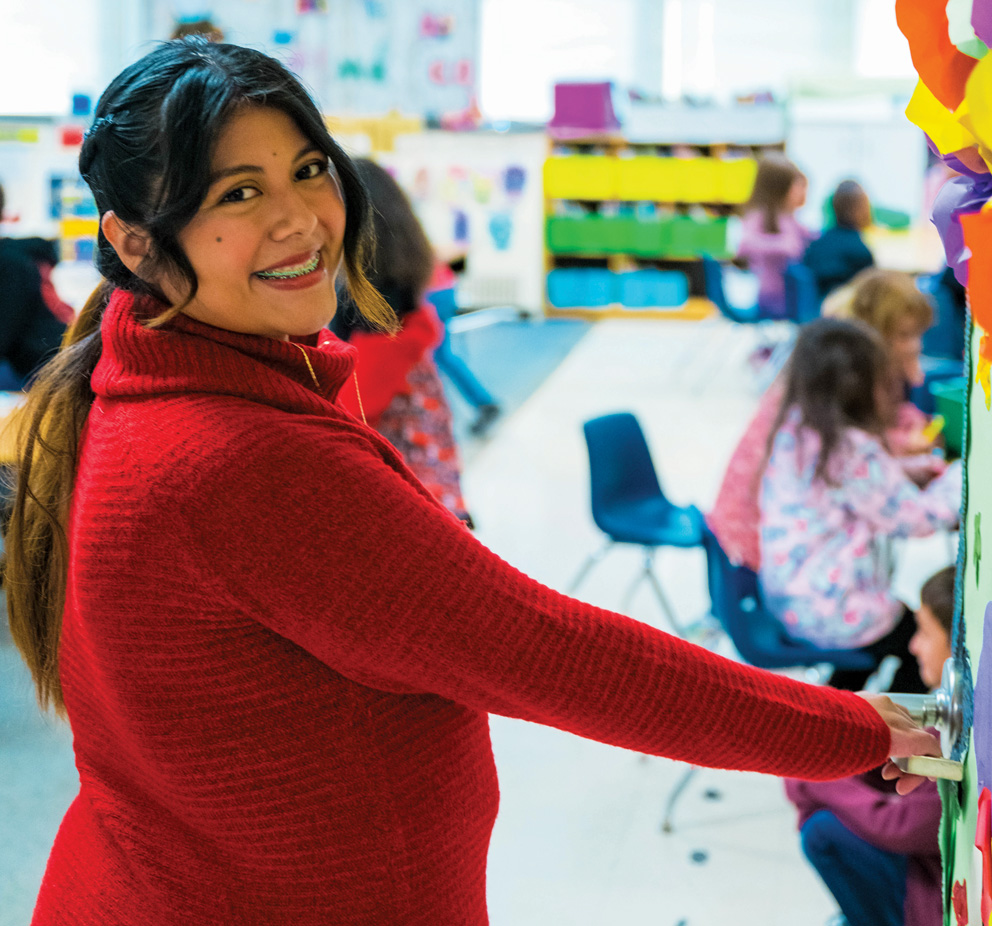
There’s that spark in me to teach.
Kenia Perez-Melchor,
student teacher at David D. Jones Elementary School
How do these student teachers describe their professors? In short, “A wealth of information.” They praised the faculty’s ability to bring years of experience into practice, to model pedagogical theories effectively, and to create productive learning communities.
“I’ve learned different techniques for how to teach all subjects and the impact that those teaching styles have on the students,” explains Alyssa Dehart.
Students in the School of Education also learn from each other. Luke Vassar describes his cohort of future middle grades teachers. “We’ve been in this program since we were sophomores, and we’ve been going through it all together. Teaching is collaborative and to create a teaching community while you’re still learning to be a teacher is incredibly important. I’m glad UNCG values that.”
Choosing a path
Which path to pursue – elementary, middle grades, secondary, or special education? UNCG offers majors in all those areas, as well as deaf education and a dual degree in elementary and special education. Each student has their own reasons for heading in the direction that they do.
The majority focus on elementary grades, with many preparing for middle grades. The School of Education partners with departments across campus to provide opportunities for high school level student teaching candidates.
Spartans teach in 3/4+
of NC school districts.
Kenia Perez-Melchor is one of those following the elementary grades path. Currently student teaching in a kindergarten classroom in the Spanish immersion magnet program at Greensboro’s Jones Elementary, she loves seeing children make connections between things they’ve done in class and everyday life. “They tell me, ‘I saw this triangle in my Dorito.’ And I see how they’re applying and how they’re learning. That’s what makes me so happy about teaching in elementary – I see that growth.”
Dual major Amanda Best is doing her special education placement while student teaching at Burlington’s Smith Elementary School. “It takes a special person to teach K-6. I wanted that training, and I knew that special education would apply to any class. There’s going to be a diverse group of needs in any classroom, special ed or general ed.”
For future science teacher Marissa Colon, having the opportunity to provide students with their first real chance to dive deeper into the subject is exciting. “I love the ability to get students’ curiosity going. For so many students, their first interaction with science is in sixth grade, and that’s what really hooks them,” she notes. Colon, a student teacher at Wiley Magnet Middle School in Winston-Salem, enjoys being able to be the one to introduce students to filling test tubes, measuring solutions, and donning goggles in the lab.
Preparing to lead your own classroom is a process full of varied experiences. According to Dr. Julie Bost, clinical assistant professor in the Department of Specialized Education Services, student teaching provides the chance to take what has been learned in the classroom and apply it in a real-life setting.
“Many of our student teachers go on to begin their teaching careers in the school where they student teach. This is a positive experience for student teachers and helps meet needs in local schools.”
Colon describes the process. “We as a cohort would visit four different schools and we’d spend a little time here and there, write reflections, and see which internship teacher we connected with the most. Being able to experience different schools within the same semester is nice because you really don’t know what you’re getting into until you start interning.”
Best sums it up: “I think UNCG does a really great job of making sure that we get that hands-on experience. And then we have some pretty awesome classes.”
I love getting to know my students and making a difference in their lives.
– Anniya Moore, student teacher at Caleb’s Creek Elementary School
Striking sparks
Colon is adamant: “Every child deserves the opportunity to be able to learn.” She’s inspired by both her students and her subject itself.
Vassar, a social studies student teacher at Greensboro’s Kernodle Middle School, is also passionate. “Education is critically important to our society. I want my students to go on to be good citizens as well as good people.”
Some were inspired by specific teachers. For Vassar, that was his math teacher, Mr. Simon. “I know a lot of people don’t like math, but he got me to enjoy that. He taught us how to budget for ourselves and how taxes work. He also created projects where we got to choose a real-life subject to bring into math, and it made the subject a lot more interesting for me.”
Moore’s inspiration was a teacher she had at Joyner Elementary in fourth and fifth grade – Miss Cindy Adams. “She was just so welcoming, and she would go and support you outside of school as well, so if you had extracurriculars going on, she was there for you.”
Perez-Melchor’s placement in the Spanish immersion program relates directly to her experience as a child. At Jones Elementary, native English speakers learn academic Spanish. “In kindergarten, we’re speaking Spanish 99% of the time. I’ve enjoyed seeing how the kids are really understanding. Their brains are like a sponge.”
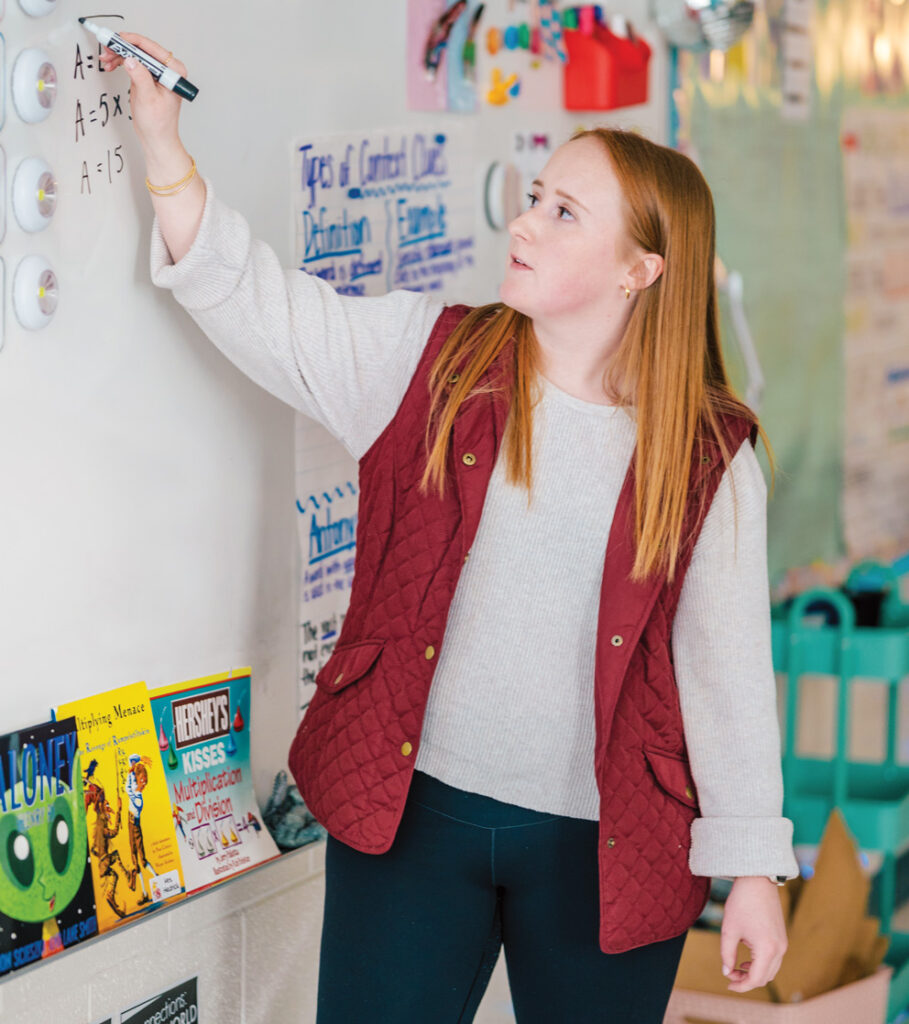
I want to inspire children the same way my teachers inspired me.
– Alyssa Dehart, student teacher at Hopewell Elementary School
She herself had to learn a new language as a kindergartener. “I didn’t know any English at the time. My teachers would find ways to communicate with me. They really worked towards making me feel welcome and making me feel like I mattered.”
Others feel they’re simply following a calling.
Alyssa Dehart, a student teacher in a Hopewell Elementary School third-grade class in Trinity, recalls asking for an overhead projector one Christmas as a child. Her passion was sealed by her own experiences as a young student. “I had supportive teachers who helped me, and I wanted to inspire children the same way my teachers inspired me.”
GET A PIECE OF THE IPiE
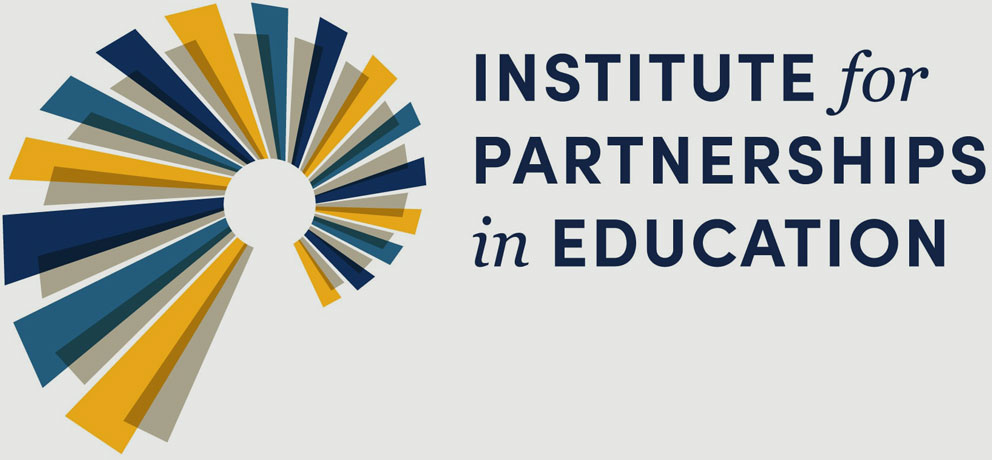
UNCG alumni are reaching into the community through the Institute for Partnerships in Education (IPiE). Established in 2020, it helps identify where the needs of public-school districts and community organizations overlap with opportunities for UNCG students to gain experience.
Faith Freeman ’04, ’11 MEd, ’18 PhD, a former director of STEM for Guilford County Schools (GCS), now co-directs IPiE. Another alumna, Megan Martin ’19 PhD, a recipient of the North Carolina Education Policy Fellowship, coordinates the Tutoring Collaborative with GCS.
UNCG graduate students working in over 30 fields of study receive assistantships, and Guilford students receive tutoring and a leg-up in their studies.
Class in session
Some of the long hallways of the elementary schools are lined with lockers, while others are adorned with simple hooks for colorful backpacks. Inside the classrooms, the walls showcase student work and inspiring quotations: “Be a rainbow in someone else’s cloud.”
For K-12 educators, school days are full of action.
Best is reading with her kindergarteners. They’re learning how to find the Who, What, When, and Where in a story.
Middle grades student teachers Colon and Vassar are preparing to grapple with science and social studies. “I think it’s a challenge that’s going to push me into becoming the educator I want to be. I’m excited,” says Colon.
In the fall semester, UNCG student teachers were in the classroom two days a week. As the spring semester began, their responsibilities increased. “We completely take over the classroom for six weeks,” explains Vassar.
“Before I started, I expected it to be a lot of work, a lot of lesson planning, a lot of curriculum building,” he continues. “I was also excited to experience a classroom full-time, build bonds with students full-time, and see their progress full-time.”
As they take the lead in their classes, they’ll lean on their on-site teacher educators, the seasoned teachers who guide them through these experiences in real time. OSTEs help the student teachers craft lessons and serve as sounding boards for questions and ideas.
“It’s hard to put into words how much they mean to you because they help you so much,” says Moore. “They really take pride in their student teachers.”
For Vassar, that on-site guidance pays off almost immediately. “Every class I am getting feedback from my cooperating teacher that I can implement, if not in the moment, in the next class period or the next day.”
What’s inspiring about OSTEs often goes beyond simple lesson plans. “My OSTE is known for being connected with NASA,” notes Colon. “She does all these programs for her kids, so she gets a lot of grant money to offer different opportunities. That’s what I want to offer to my students as well.” That connection with her OSTE also allowed Colon to be part of a science fellowship. With other teachers, she attended a weekend event, learned about an experiment, and brought it back to her classroom.
Prepare to Launch
The new Academic Support Hub is launching UNCG’s education students into their professional careers.
“The Academic Support Hub fulfills a desire from our students for further tools to help them be successful,” says School of Education Dean Randy Penfield. Public educators have a rigorous set of licensure exams to take. That’s why the School of Education, with the support of donors, is lending a hand. In addition to test prep, students can find tutoring in American Sign Language and math.
“We are dedicated to helping our students be as prepared as possible to begin their careers when they graduate from UNCG,” he adds.
As a blend between a mentor and a colleague, the OSTE can be a bridge between the theory learned in the UNCG classroom and the practice of teaching in a K-12 school. “It’s nice being able to go to your OSTE, who’s been doing it for years, and taking those notes to bring back to your university classes,” says Moore.
Perez-Melchor describes learning to revise, change, and develop lessons with her OSTE. “I can see ways to change my lesson – what I can add or take away.”
Dr. Howerton adds, “The student-teaching semester allows our students to simulate all the activities of a full-time teacher. This includes working as lead teachers or as a co-teacher with their cooperating teacher. This is the culmination of their progress through the teacher education curriculum and provides the opportunity to demonstrate their professional competence.”
The routine of life in a classroom becomes second nature to student teachers as the year progresses. They give no second thought to separating their elementary students into small groups and leading a math or reading lesson around a common table. Reacting to a question from a middle schooler who is looking for the best way to find the mass of an object during a lab is now automatic. Developing ways to modify lessons for a student who needs accommodations due to a documented disability now comes much easier.
Best faces slightly different requirements in special education. The fact that these classes are smaller is a plus, but they come with the challenge of additional paperwork and compliance requirements.
“I love the special education side because I get to really know my kids and we get to work one-on-one or in small groups. In the general ed classes, I have 22-plus children that all want and need attention,” she says.
For Moore, the best parts of the student teaching experience are clear. “I’ve connected with the kids more, and I’ve been able to talk to more teachers.”
Let’s bring gaming into the classroom as a learning tool.
– Luke Vassar, student teacher at John R. Kernodle Middle School
Today’s Tech
In a corner of one classroom, near the bookshelf and craft materials, a row of laptops charges in an “Anywhere Cart.” It takes both technology and old-fashioned “thinking caps” to educate today’s children.
Even though it was not long ago that these student teachers were the ones sitting behind the desks in elementary or middle school, they have noticed changes from their time as students.
Colon was one of the many students who did not have an iPhone when she was in school. It’s not the same today. “My kids are super into their phones and their Apple watches.”
More significantly, the rise of technology in the classroom has brought about new experiences.
Late in the fall semester, students in Moore’s second-grade class sat at their desks, cutting paper and gluing the pieces together to build snowmen. Technology allowed the lesson to continue when the students were done. Moore used a document camera connected to a smart screen to project a completed snowman. She asked the children to explain their process – the “real” lesson. What was done first and why was it done in that order?
In many middle and high schools today, all students have their own laptops. Vassar notes, “The benefits are that they’re able to access the internet – all these resources they wouldn’t be able to if they didn’t have a computer. The downside is that they’ll pull it out in the middle of class and start playing games on it.”
The goal, as with any teaching tool, is to improve education. “Technology is used to help students be interactive and learn through play. It’s more hands on,” says Dehart.
Another effect of technology? Students don’t use traditional textbooks as much as they did just a few years ago. Vassar continues, “There are new things happening every year that you might need to add. Information moves so fast we can’t rely on a textbook anymore. We have to create our own digital textbooks and gather texts online that are more relevant and more up to date for students.”
It can also expand access to information. “For some students it might be really hard to go outside of school hours to get access to a library. However, they can access a digital library and figure out any information they might need to know or do online tutoring without having to leave their homes,” he adds.
Additionally, many traditional places where you would gather information have simply migrated online. “Some science resources, like National Geographic, have really cool online information,” says Colon.
The use of computers has given rise to numerous online learning tools. Being able to have students use sites like BrainPOP that have interactive tools in areas such as reading, math, or science, makes learning fun for the students.
In one elementary classroom, the schedule included a mix of traditional and technology-enabled tasks. “Finish coloring your moose” was followed up with two app-based activities, Prodigy and Epic.
Nevertheless, the use of technology changes based on the grade level and needs of the specific class. Perez-Melchor, who is placed in a kindergarten classroom, says, “My students aren’t spending a lot of time on computers or iPads. Most of the day is spent doing other activities, hands-on things, and actually using critical thinking. The technology they’re using shouldn’t be a way to keep them occupied. It should be an extra tool to support their learning.”
Expectation and Reality
Last fall, when they were only in their classrooms part-time, the student teachers imagined what full-time teaching would be like. Expectations and reality can be different.
Moore was excited about focusing on lesson plans. “But there’s so much more that goes into it when you’re a teacher,” she says. “For example, how to help the kids that are falling behind or need more support in the classroom.”
While their perceptions of the job have grown, these future teachers remain dedicated and passionate about entering their own classrooms and educating young people. They see long careers in the classroom ahead.
I want my kids to remember that they came to school and they were loved by someone.
– Amanda Best, student teacher at Marvin B. Smith Elementary School
These UNCG student teachers are just getting started, but they already know what kind of legacy they want to build. They want to make a difference in the lives of their “kids.” They want to be teachers who are compassionate, positive, kind, and loving.
“I want my kids to remember the content I taught, but also the fact that when they came to school, they were loved by someone,” said Best, whose classroom is filled with displays that feature students’ projects and has “Learn & Grow” stenciled in large, purple letters across the top of one wall.
Other takeaways? For Dehart, it might be seeing the amazing progress made from the first day in class to the last. For Vassar, it may be the “a-ha” moments. “I love seeing that little click where everything makes sense.”
For Perez-Melchor, it’s teaching not just content, but character. Moore, a Black educator, speaks about how representation matters. For Colon, it may be “opening a doorway for new experiences” for her students.
Whatever specific inspiration fuels UNCG’s student teachers, Dehart’s sentiment may be true across the board. “I teach with my heart. If you ever saw me teach, you would see that my heart just shines.”
Spreading Joy in the Classroom
“My teachers throughout my education career pushed me to become who I am today.”
– Marissa Colon, student teacher at Wiley Magnet Middle School
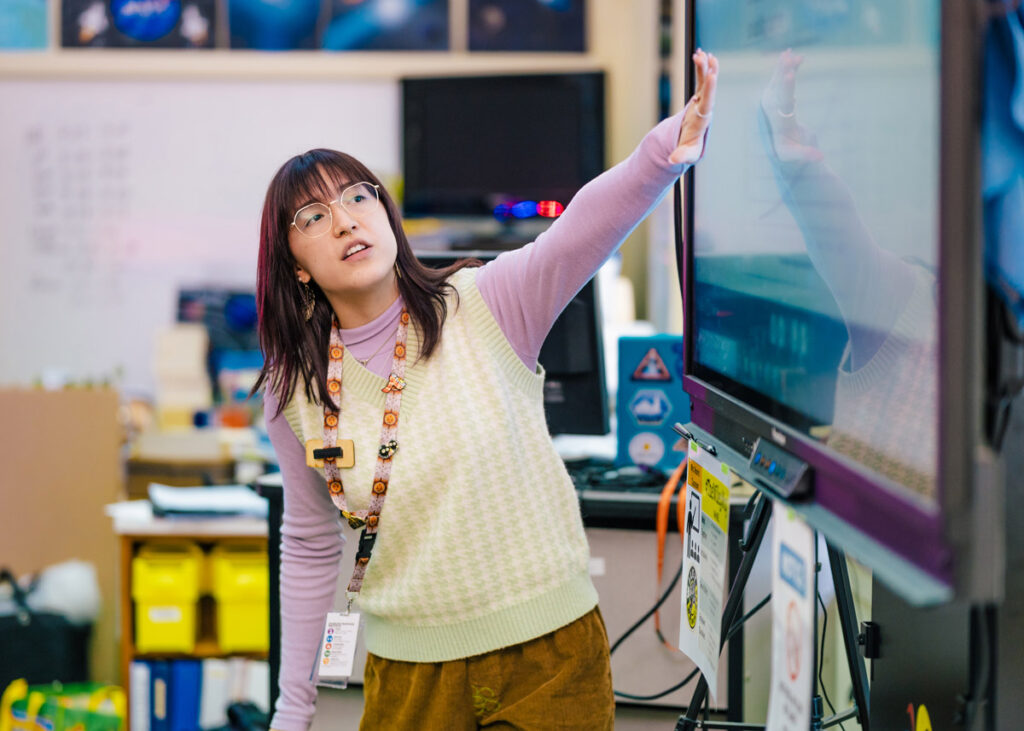
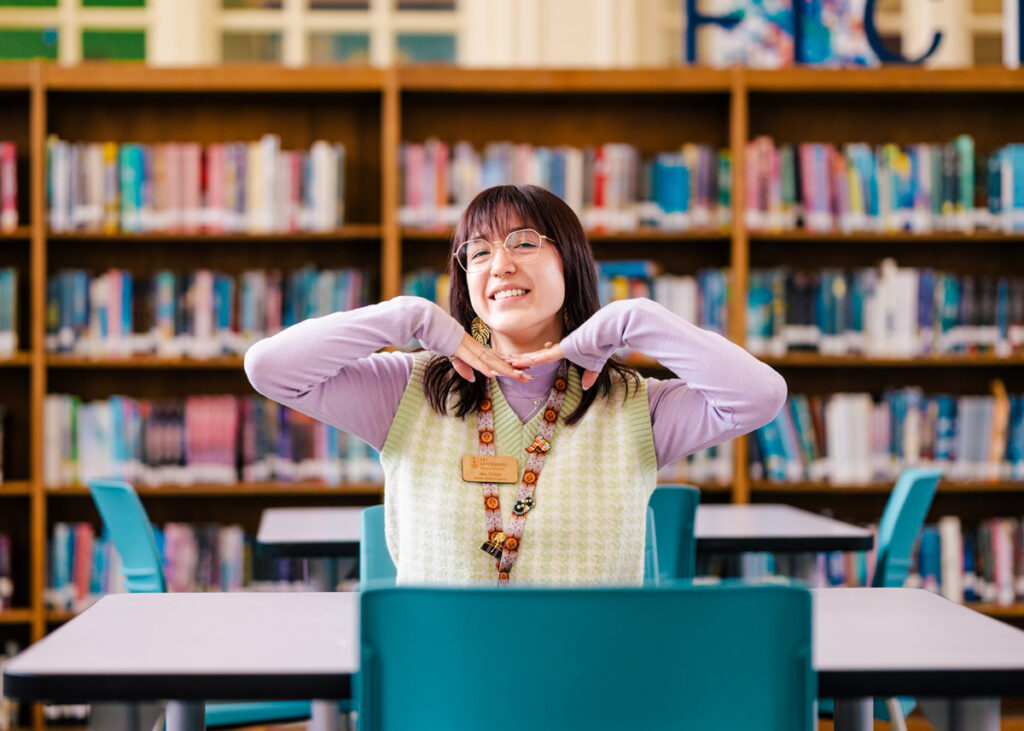
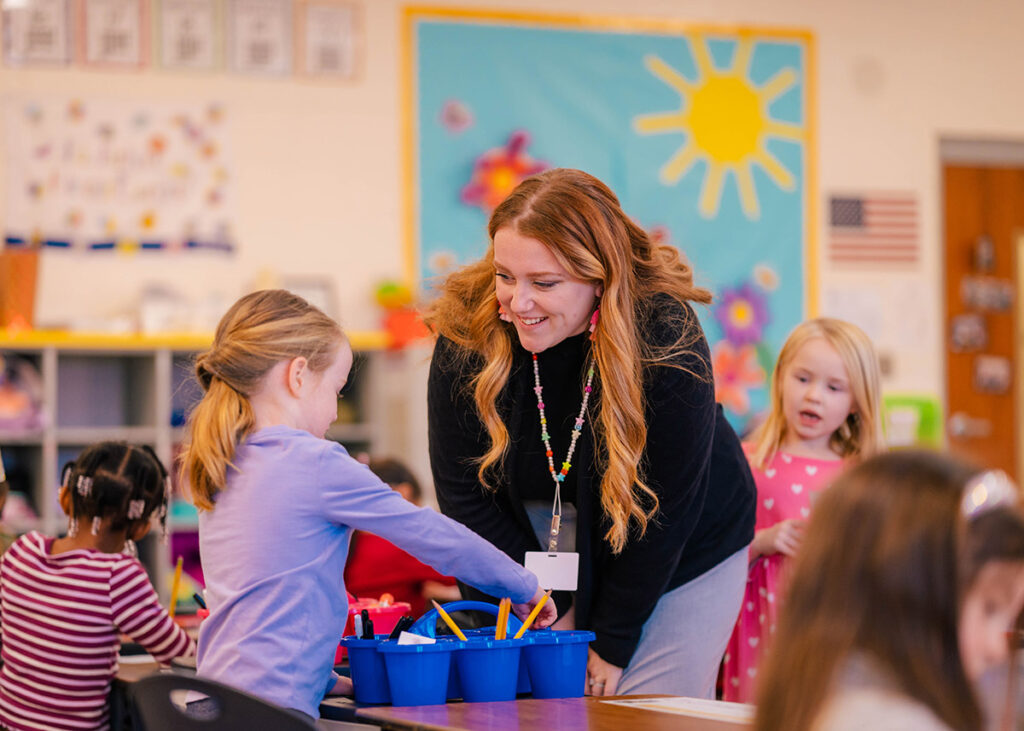
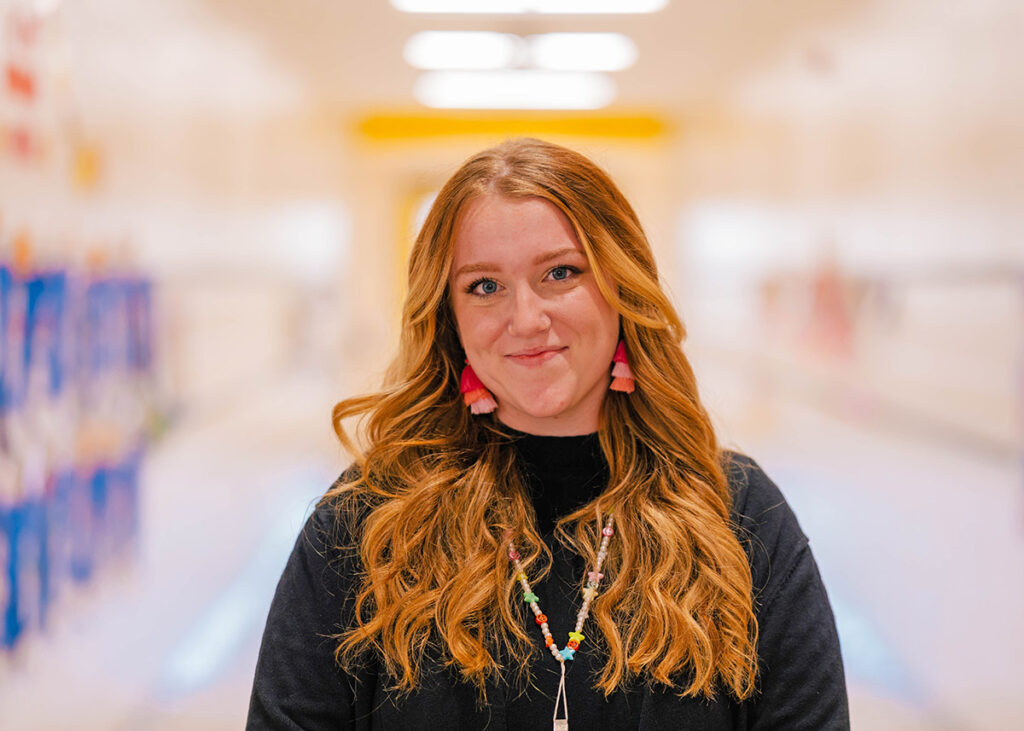
“I want my kids to remember that they came to school and they were loved by someone.”
– Amanda Best, student teacher at Marvin B. Smith Elementary School
“I love getting to know my students and making a difference in their lives.”
– Anniya Moore, student teacher at Caleb’s Creek Elementary School
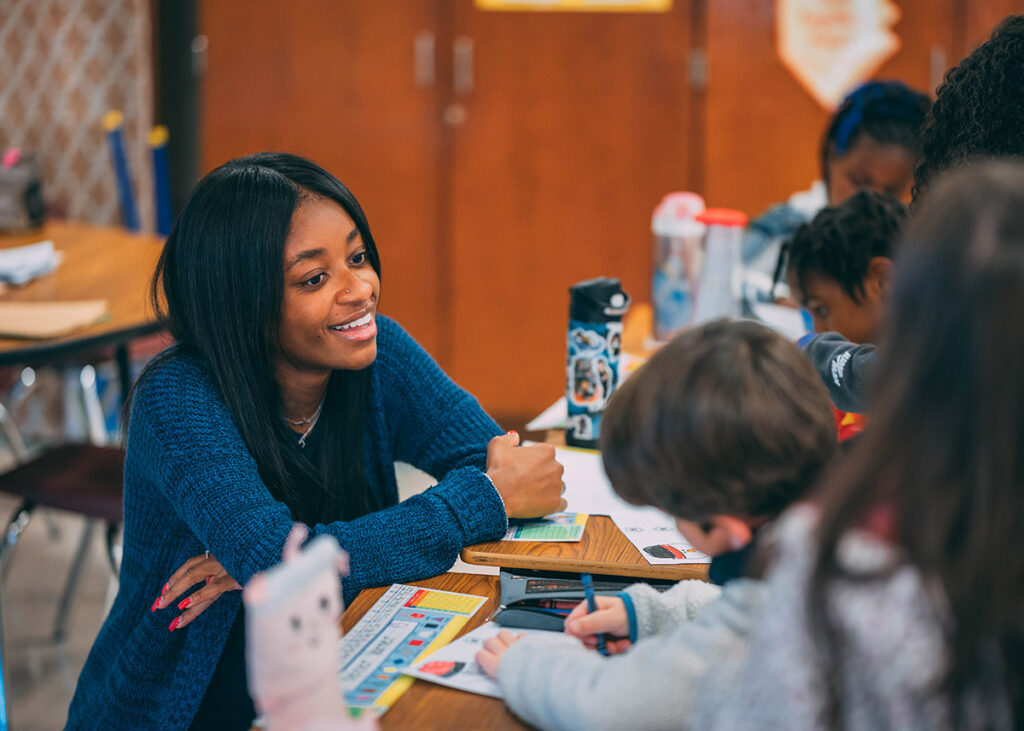
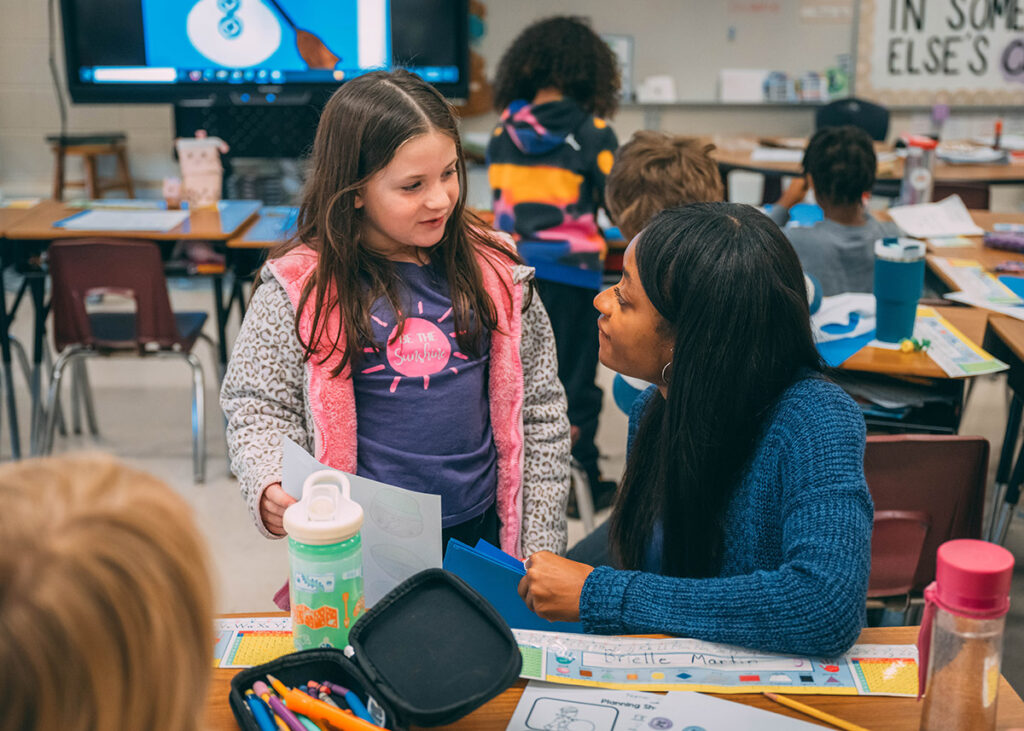
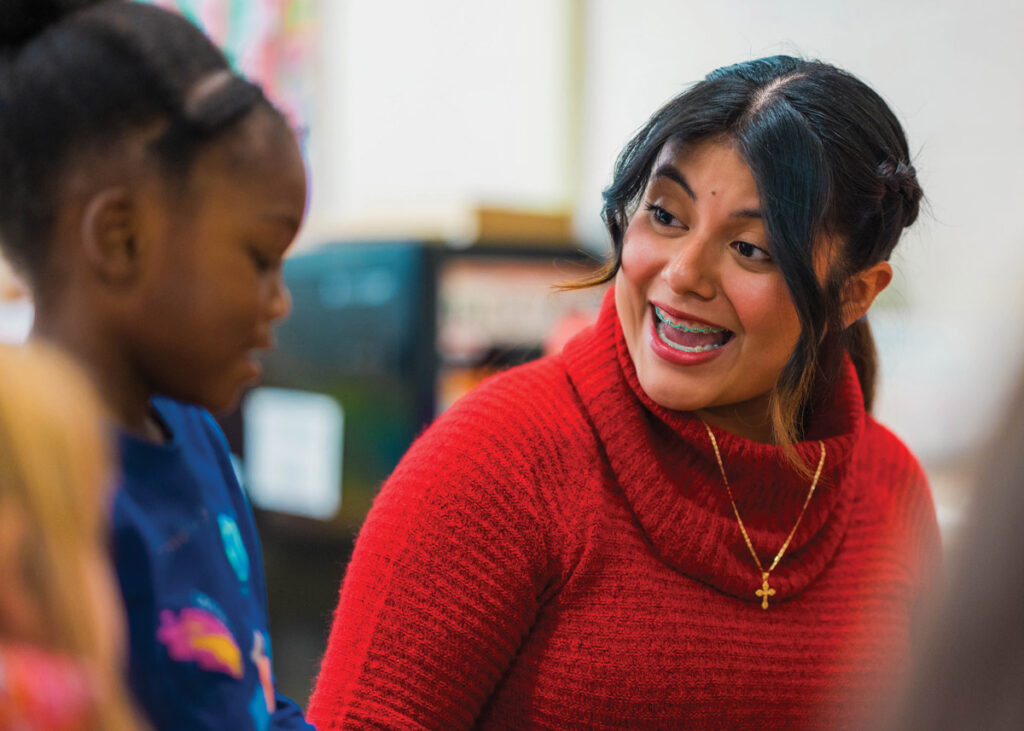
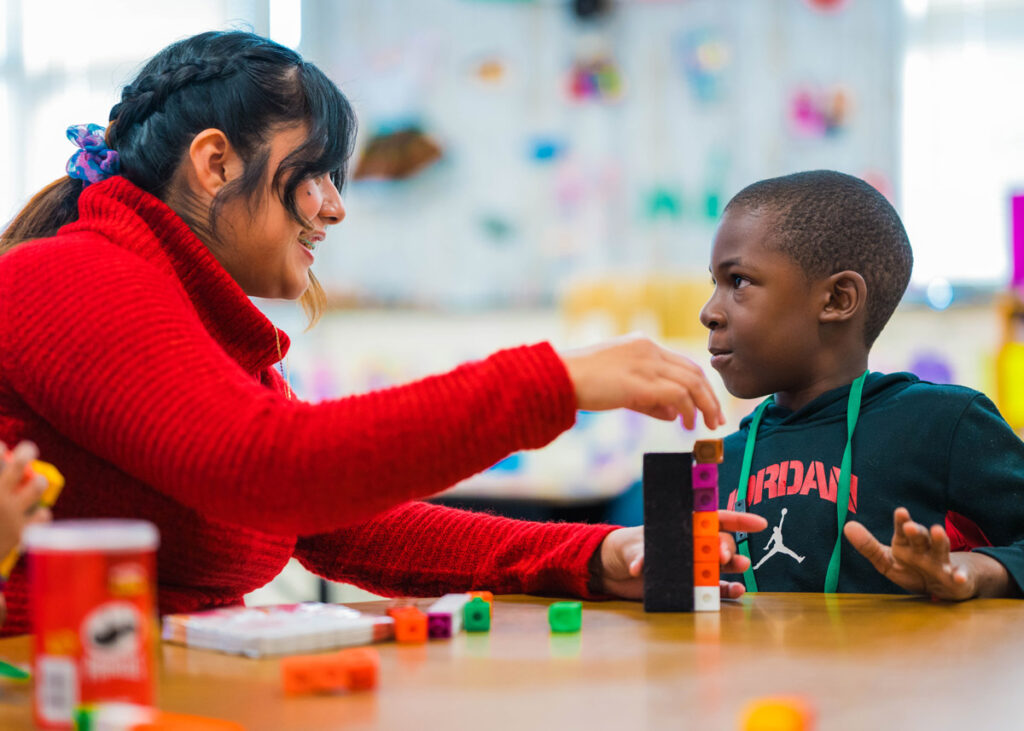
“There’s that spark in me to teach”
– Kenia Perez-Melchor, student teacher at David D. Jones Elementary School
“There’s an energy in a middle school classroom that I really enjoy.”
– Luke Vassar, student teacher at John R. Kernodle Middle School
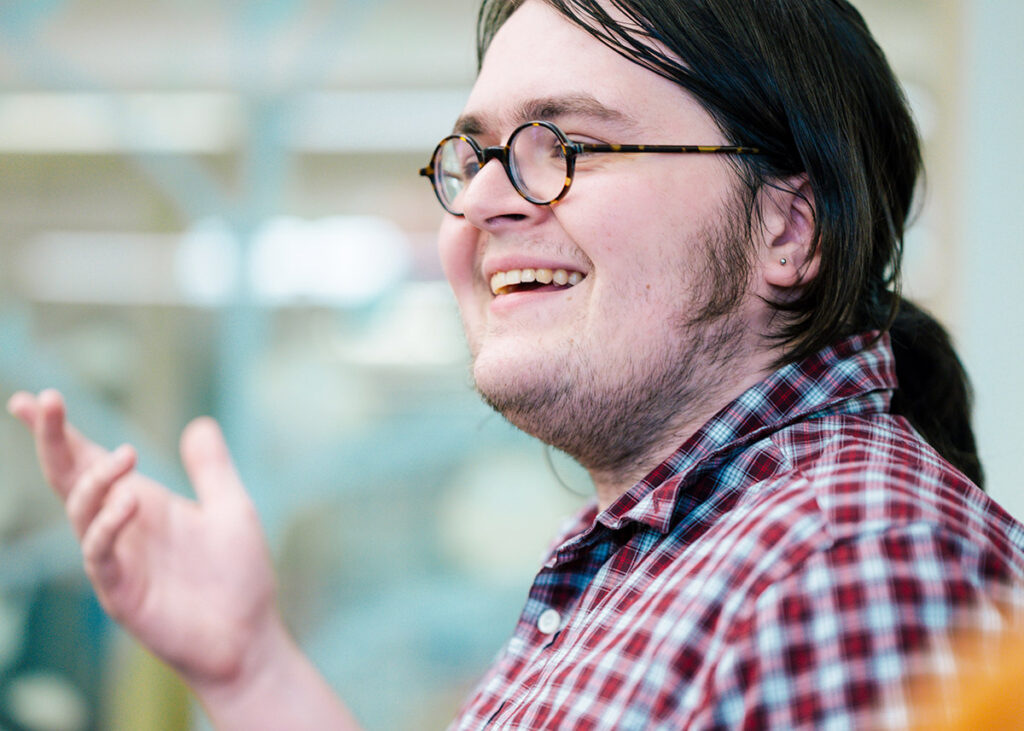
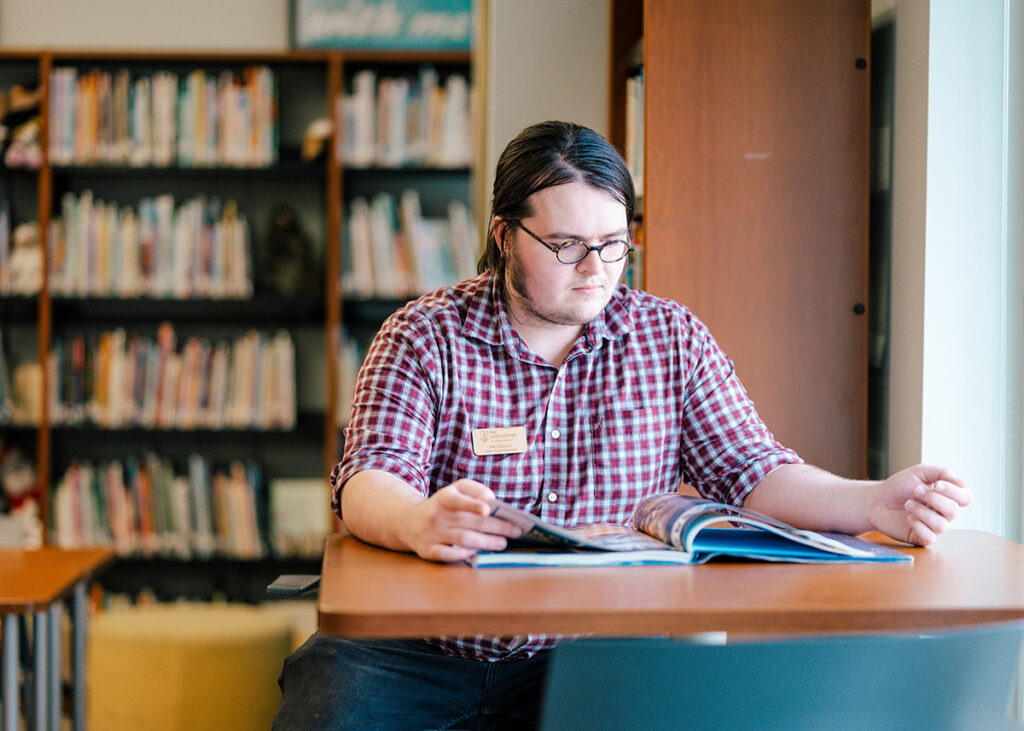
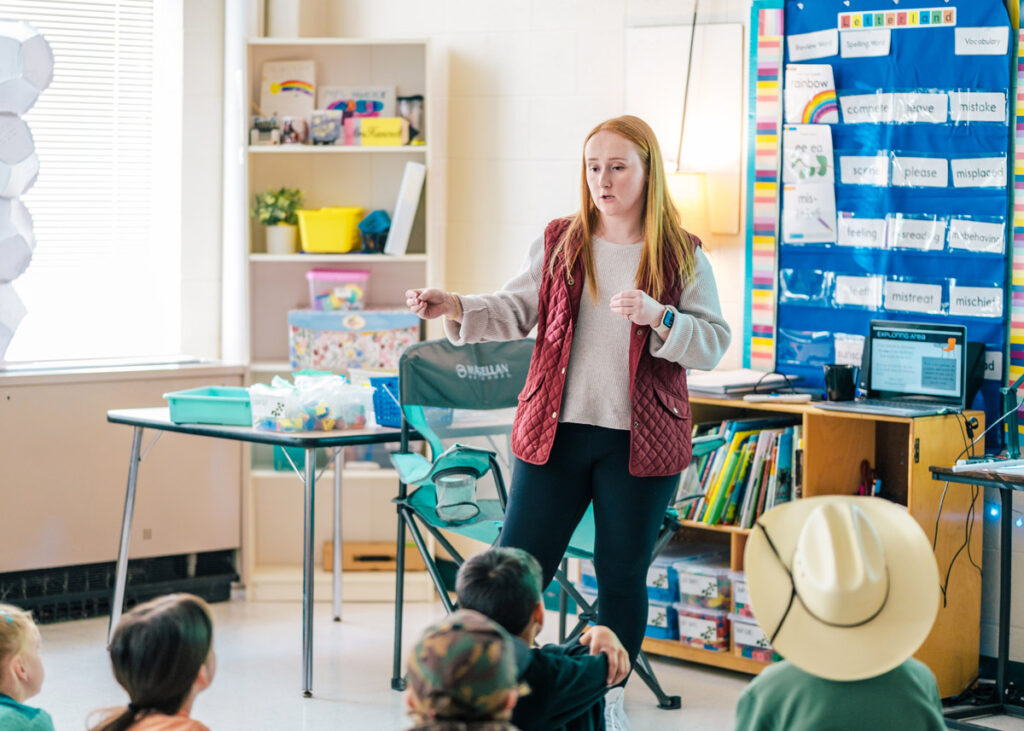
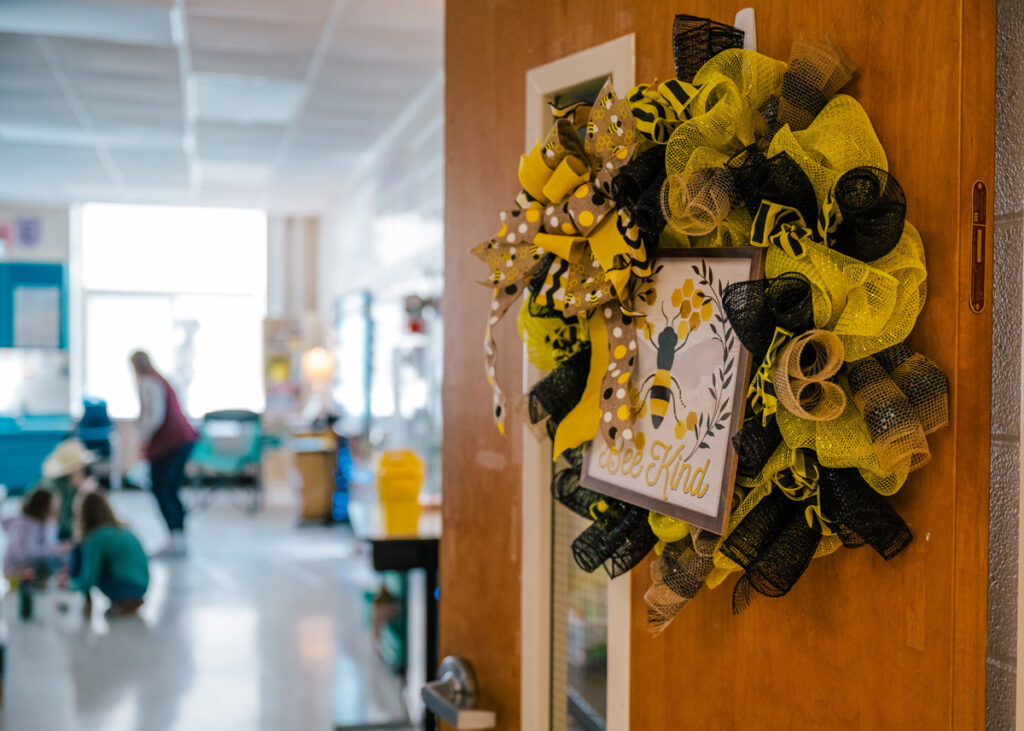
“I want to inspire children the same way my teachers inspired me.”
– Alyssa Dehart, student teacher at Hopewell Elementary School
Article written by Chris Rash, School of Education.
Sidebar on extracurricular interests by Mercer Bufter ’11 MA
Photography by Sean Norona ’12